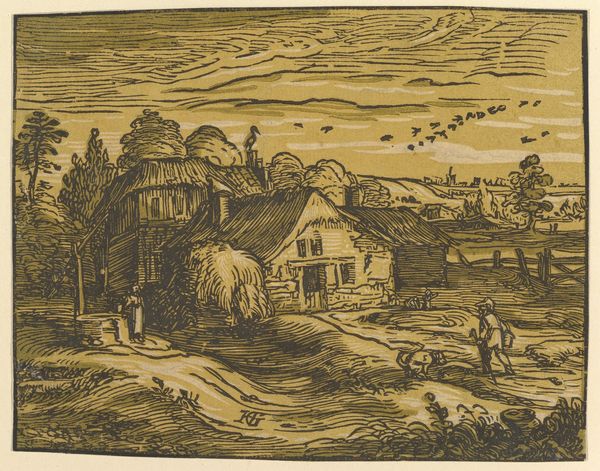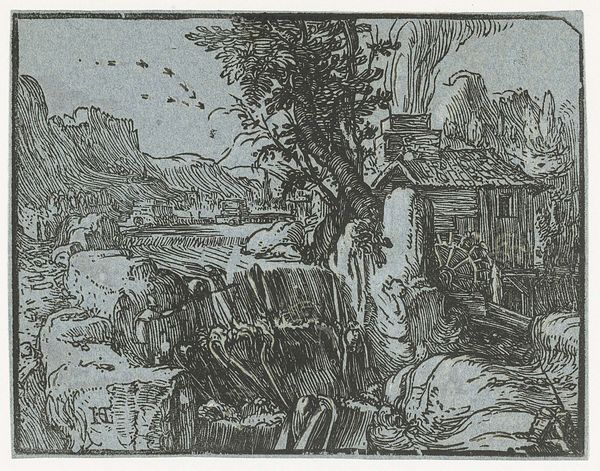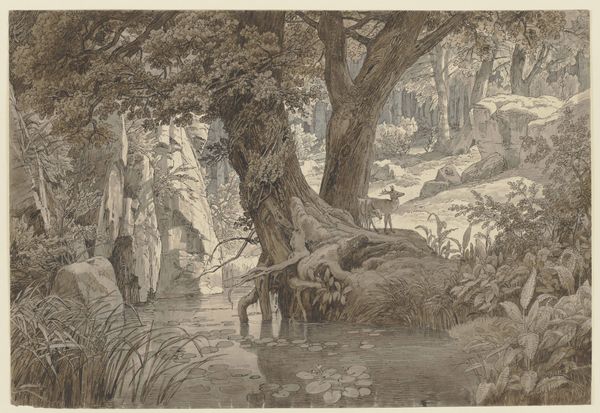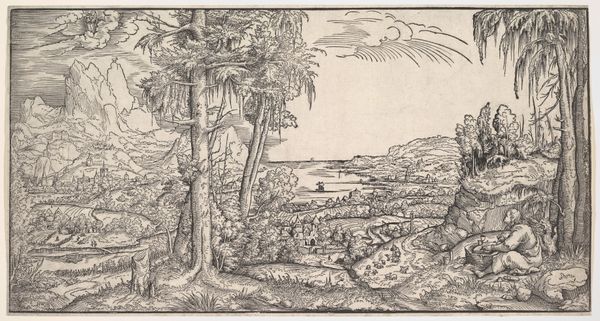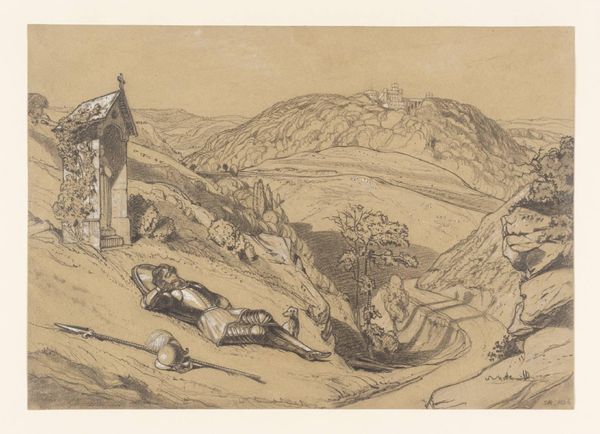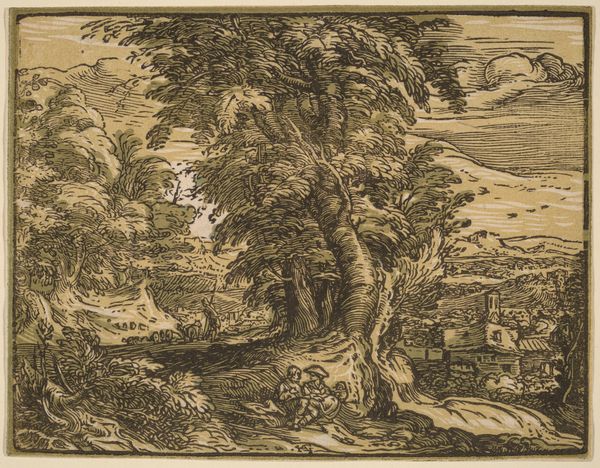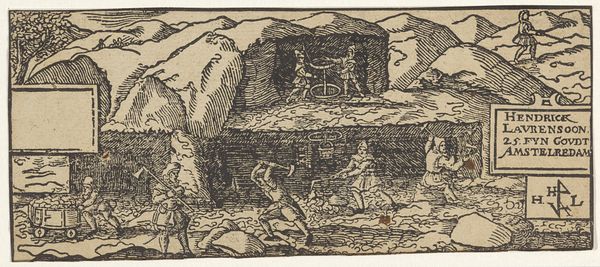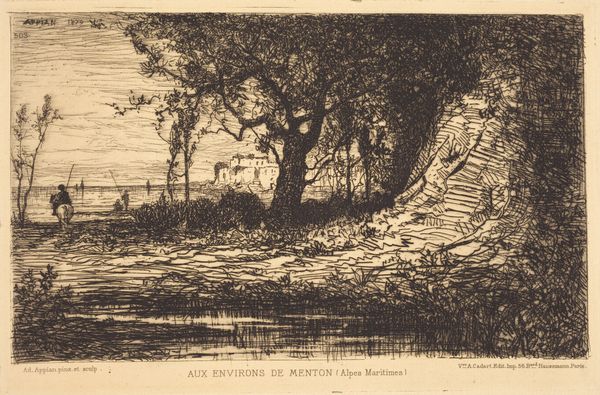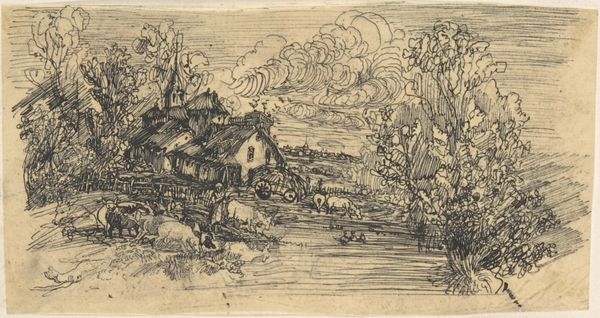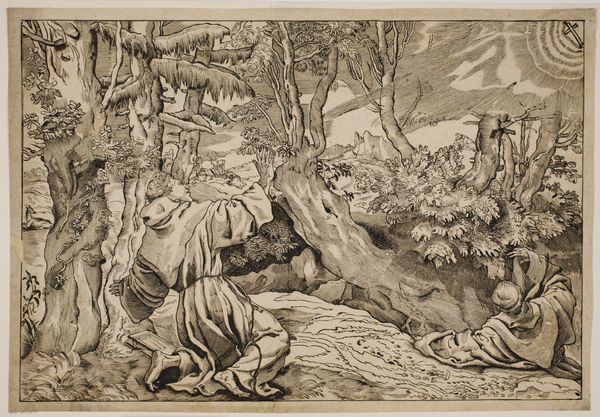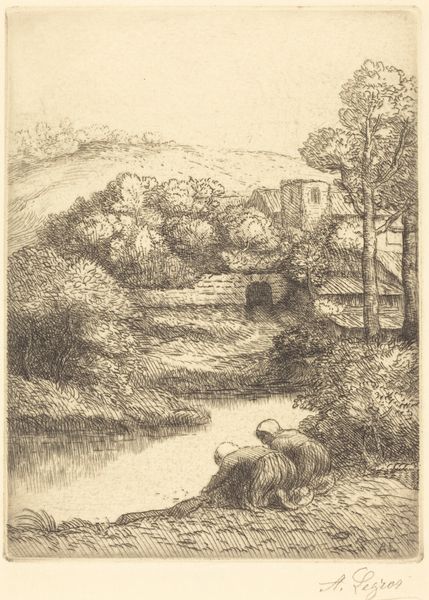
Landscape with a Waterfall, from Four Small Landscapes Possibly 1597 - 1620
0:00
0:00
drawing, print, etching, intaglio, paper, woodcut
#
drawing
# print
#
etching
#
intaglio
#
landscape
#
paper
#
woodcut
#
northern-renaissance
Dimensions: 112 × 148 mm (image/plate/sheet)
Copyright: Public Domain
Curator: Looking at Hendrick Goltzius's "Landscape with a Waterfall, from Four Small Landscapes," dating perhaps from 1597 to 1620, I'm struck by its sheer physicality. It's an intaglio print, probably etching and/or engraving, rendered on paper, isn't it marvelous? Editor: It has such an overwhelming and somewhat wild feel for what looks to be a smaller print. The chaotic texture in the foreground feels quite raw and untouched despite being rendered. It also brings me a rustic, industrious feel, and it sits next to an image of natural beauty. What do you think is happening here? Curator: Well, it shows both the sublimity of nature and also suggests an industrious countryside that feeds directly into burgeoning urban markets of the Northern Renaissance. You know, these landscapes gained popularity among urban audiences removed from rural work. This "wilderness" becomes a desirable commodity. Editor: Right, I suppose these landscapes performed a specific function for those viewers. I am looking at the woodcutting’s material reality, that it's a reproducible image; I also can’t help but wonder who was accessing this, given the labor invested and the social status that accompanies artistic patronage and consumption during that period. Was the work involved itself celebrated at all? Curator: That's an important point, considering how the proliferation of prints also shaped artistic reputation. An artist’s success depended not just on artistic skill but on access to networks, workshops, and dealers who disseminated these prints across Europe. This landscape print existed within networks of exchange between artist, artisan, patron, and consumer. Editor: You can certainly see that interplay in the fine lines rendered for that rustic, almost idyllic house situated nearby to the impressive and cascading waterfall. It’s interesting how the "high" art landscape aesthetic can co-exist with these images of more commonplace subject matter—how these processes blur categories and histories. Curator: Yes, Goltzius masterfully captures that tension! Editor: What a powerful way to experience the changing world of the late 16th century, even through a small piece of paper. I’m now seeing more profoundly the labor involved in bringing us these prints! Curator: Indeed, thinking through these complex issues of production really reframes our viewing experience of even the humblest-seeming images.
Comments
No comments
Be the first to comment and join the conversation on the ultimate creative platform.
